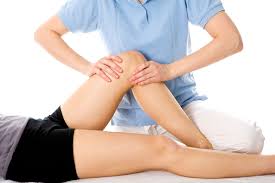medical treatment of sciatica
"Important. In case of sciatica, it's best to stay active, moderately. Ancient times it was recommended to keep the bed Nowadays we know that it provides no therapeutic benefit and by remaining active, it promotes healing (see "Physical Activities" below). But if the pain is so significant as to have bed rest is good to do, but no more than 48 hours. If pain is not relieved by rest or is unbearable, it is better to consult a doctor again."
Sciatica usually treats well over a period of a few weeks. When neuralgia is caused by a specific disease, recovery or control by medications typically cause symptoms disappear.
For pregnant women, sciatica tends to disappear after delivery.
pharmaceuticals
Various medications can be used to relieve pain. The first is recommended acetaminophen (Tylenol®).The anti-inflammatory medicamet(NSAID) available OTC also have a painkilling effect, besides being anti-inflammatory medicament(eg, ibuprofen (Advil, Motrin) and acetylsalicylic acid (Aspirin) ). However, they are not more effective than acetaminophen to relieve symptoms, according to studies. Moreover, their usefulness in case of sciatica is in doubt. Indeed, most of the time, the inflammation is not involved. That said, if an adequate dosage of acetaminophen do not effectively relieves pain, one can opt for non-steroidal anti-inflammatories and see if the result is better. Inquire precautions and cons-indications.
If the pain is resistant to these medicament, muscle relaxants, non-steroidal anti-inflammatory medicament in higher doses or narcotics prescribed by the physician can be used.
One can also use local injections of a mixture of analgesics and corticosteroids. You should know that these treatments offer short-term relief but no long-term benefit.
Some tips
- The most comfortable position for sleep would be on the side with a pillow between the knees and under the head. One can also lie on your back with knees and the head and shoulders slightly elevated by pillows.
- During the first 48 hours, apply ice to the painful area can relieve pain. To do this, use an ice pack wrapped in a towel. Apply to the painful area for 10 to 12 minutes. Reapply every 2 hours or as needed.
- Thereafter, the heat can be beneficial. It helps to relax sore muscles. Take a hot water bath is ideal. Otherwise, apply several times a day a source of heat (a warm, moist towel or heating pad).
- Note. Heat and cold applications on sore muscles have long been used. However, recent studies question their real usefulness in relieving pain lombaires4. There is more evidence to support the use of heat than cold.
Physical activity
It is better not to stop the usual activities over 24 hours to 48 hours. Studies show that people who stay active recover faster. Staying active helps to release tension in the muscles and preserves muscle mass. If the pain is important, rest in bed for 1 day or 2 is acceptable. However, it should resume gentle activities as soon as possible, as soon as the pain becomes tolerable because it promotes healing.
When you feel pain, it is recommended to be limited to daily physical activity and some light exercise, such as walking. These gentle activities will not aggravate the problem. Rather, they are beneficial. Exercise stimulates the production of endorphins, hormones that inhibit transmission of pain messages.
Thereafter, the intensity of physical exercise can be gradually increased. Swimming, stationary bike or other low-impact exercises are generally beneficial.
Physiotherapy
If the pain was evident for more than 4 to 6 weeks, consulting a physiotherapist is recommended to recover well. Various exercises and stretches to correct posture, strengthen back muscles and improve flexibility are offered. To be effective, the exercises should be practiced regularly.
Physiotherapy treatments can also include gentle massage, exposure to heat and electrotherapy.
- Massages. The professional massages performed are usually superficial, slow and regular exercises that allow soften the painful area.
- Heat. Various sources are directed to sore muscles: infrared rays, hot packs, hot spa (in Europe, thalassotherapy is often integrated into the treatment of sciatica and back pain).
- Electrotherapy. Ultrasound, transcutaneous electrical stimulation, or TENS, the ionization, laser, etc. also relieve pain by blurring the nerve messages
Surgery
If pain persists more than 3 months despite lavished treatments, surgery may be considered. If sciatica is related to a herniated disc, you should know that surgery is needed in less than 5% of cases. Surgery will remove the pressure of the vertebral disc on the sciatic nerve.
medical treatment of sciatica
 Reviewed by Unknown
on
8/28/2016
Rating:
Reviewed by Unknown
on
8/28/2016
Rating:
 Reviewed by Unknown
on
8/28/2016
Rating:
Reviewed by Unknown
on
8/28/2016
Rating:






Aucun commentaire: